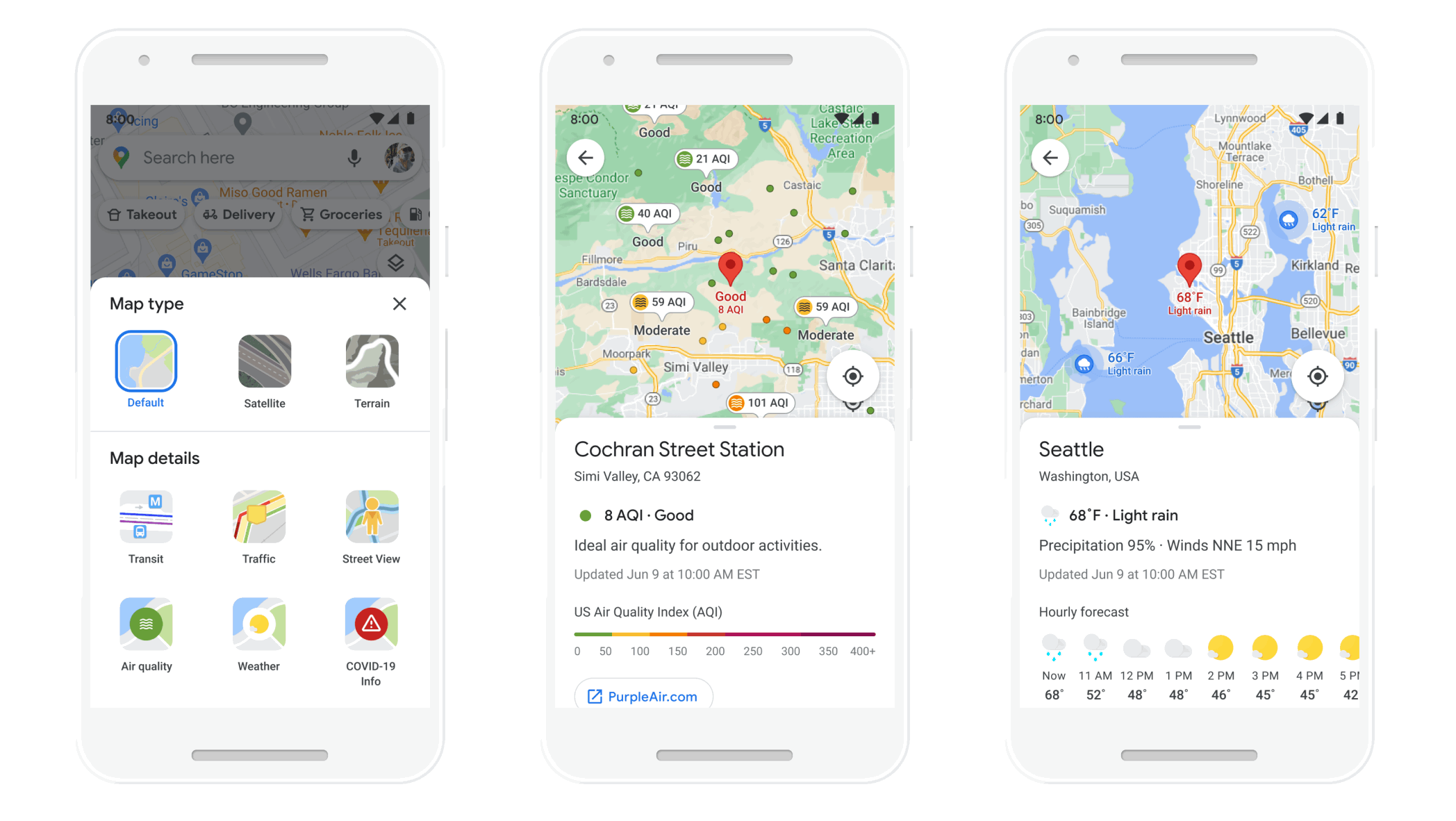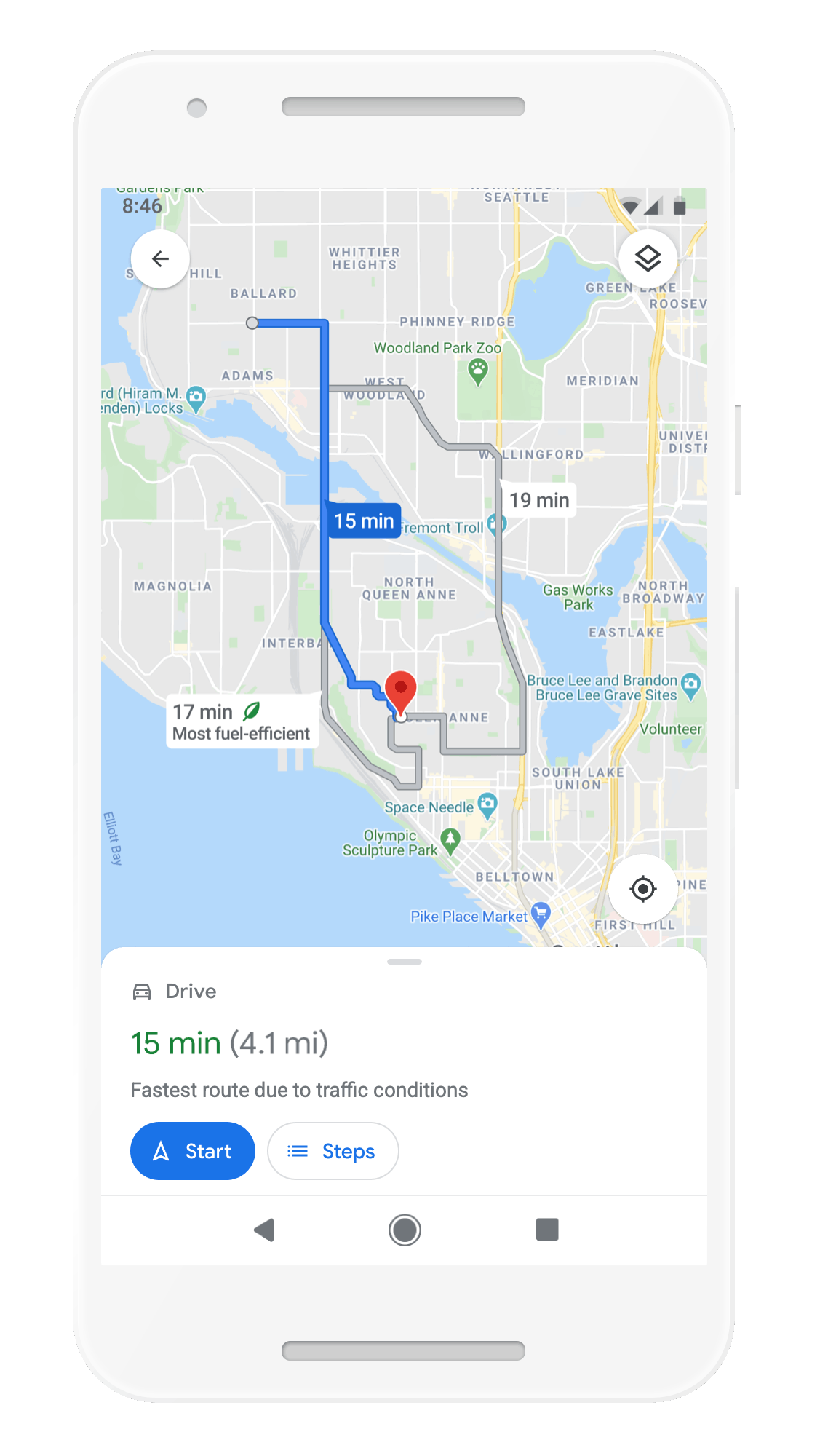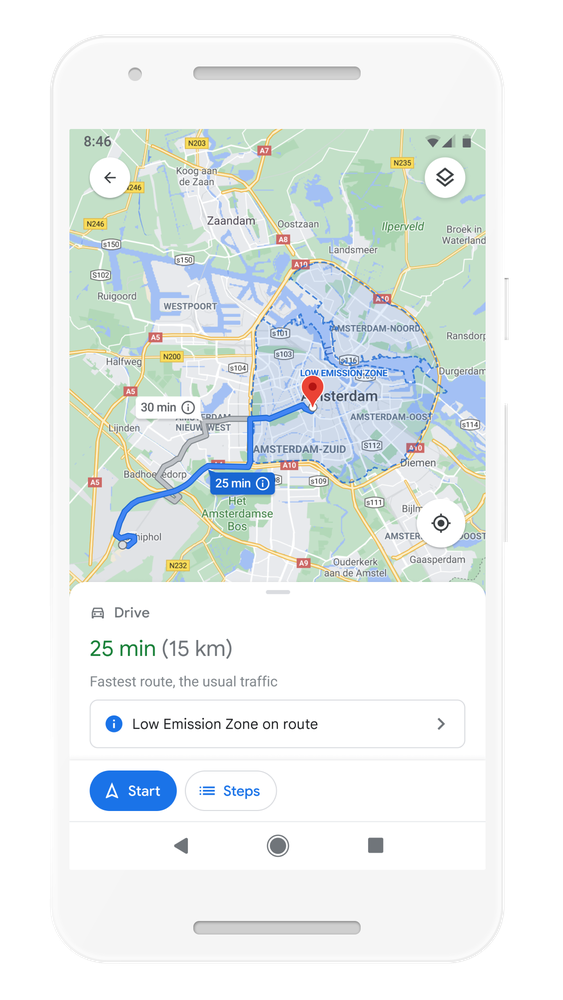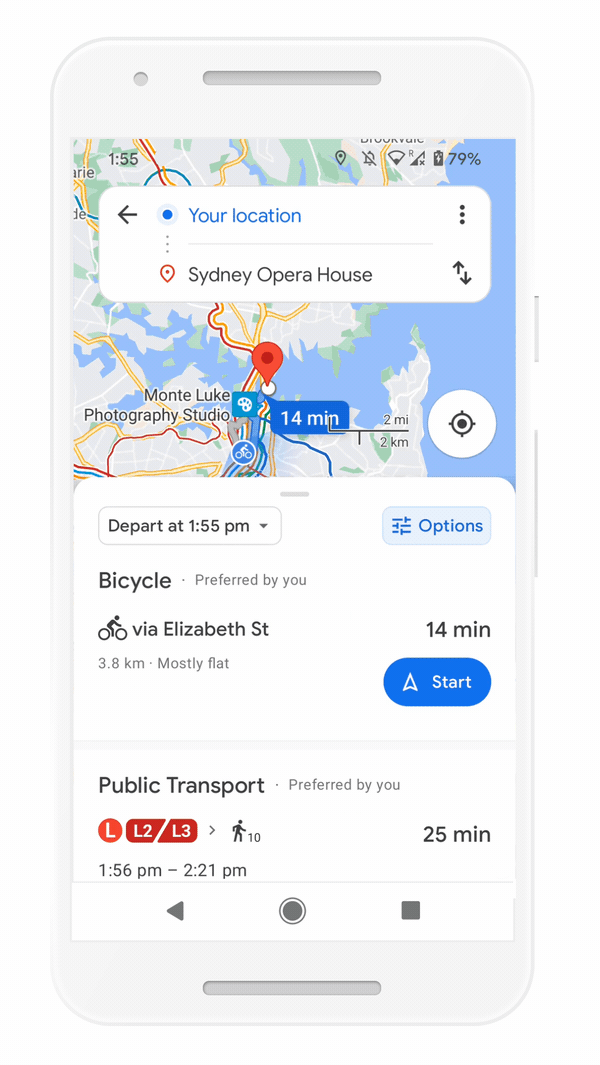Google Maps will Soon Start Showing Eco-Friendly Route Options
In a recent product update published on Google Blog, Dane Glasgow, VP Product at Google has revealed that the company is on track to bring over 100 AI-powered improvements to Google Maps so you can get the most accurate, up-to-date information about the world, exactly when you need it. In this post we talk about two interesting updates related to weather & air quality and suggestion for eco-friendly route options to get around.
Plan ahead with more information about Weather and Air Quality

Google Maps will soon include a new weather layer, so you can quickly see current and forecasted temperature and weather conditions in an area. Simply, with the new google maps update you’ll never get caught in the rain without an umbrella.
Additionally, the new air quality layer will show you how healthy (or unhealthy) the air is — information that’s especially helpful if you have allergies or are in a smoggy or fire-prone area.
Data from partners like The Weather Company, AirNow.gov and the Central Pollution Board power these layers that start rolling out on Android and iOS in the coming months.
The weather layer will be available globally and the air quality layer will launch in Australia, India, and the U.S., with more countries to come.
Find more Eco-Friendly Route Options
Google Maps plans to start highlighting journeys and directing drivers to routes that it calibrates to be the most “eco-friendly” based on a range of factors. The calculation of the default route that potentially generates the lowest carbon footprint would be done by assessing factors such as traffic data, congestion history, and even road inclines.

From Amsterdam to Jakarta, cities around the world have established low emission zones — areas that restrict polluting vehicles like certain diesel cars or cars with specific emissions stickers — to help keep the air clean. To support these efforts, Google Maps is working on alerts to help drivers better understand when they’ll be navigating through one of these zones.
Soon you can quickly know if your vehicle is allowed in the area, choose an alternative mode of transportation, or take another route. Low emission zone alerts will launch in June 2021 in Germany, the Netherlands, France, Spain, and the UK on Android and iOS, with more countries coming soon.

But as we know that getting around sustainably goes beyond driving. So Google Maps is making it easier to choose more sustainable options when you’re on the go. Soon you’ll get a comprehensive view of all routes and transportation modes available to your destination — you can compare how long it’ll take to get there by car, transit or bike without toggling between tabs.
Using advanced machine learning models, Maps will automatically prioritize your preferred modes — and even boost modes that are popular in your city. For example, if you bike a lot, the Google Maps will automatically show you more biking routes. And if you live in a city like New York, London, Tokyo, or Buenos Aires where taking the subway is popular, maps will rank that mode higher. This rolls out globally in the coming months on Android and iOS.

Google said that when alternative routes “are significantly faster”, the mapping app will offer options, and let users compare estimated emissions on the default and alternative routes. The new feature, Google said, is part of its commitment to fight climate change.


